We woke up and got ready, leaving ourselves enough time to go to convenience stores along the way to the train station and look for breakfast.
We gathered what we needed for the ride and found our way to the shinkansen tracks for our 08:04 Sakura-type train.
The seats on this type of shinkansen are split 2 and 2, but I guess this particular train was somewhat crowded, so S and I had to sit in the same row but with the aisle separating us. It's not too much of a hardship, but I didn't want to bother the passenger next to me by taking too many photos.
Lol so there's just what I could take somewhat discreetly of my lap lmao. The seats felt larger and more comfortable compared to the ones I'm used to in the Nozomi/Hikari/Kodama shinkansen type trains and there's cup holders!
We arrived at Hiroshima station just after 09:30, and I followed the signs to get to the streetcar. When I had been doing research about getting around, most of the websites called it a "tram" so I had been desperately looking for signs for a tram, but obviously couldn't find any because it's translated as "streetcar, and really that's what they are.
For some reason, I hadn't quite caught on to the fact that it wasn't like a normal train (with the tracks and full station etc) until we fully approached and saw this sign. Luckily, it spells out everything you need to know and has plenty of English to help you. For the vast majority of routes, the cost to ride the streetcar is 160yen. You pay once you exit the tram unless you have a commuter card. Since we were only staying for the day and wasn't planning on using it much, we didn't bother trying to get one or a day pass.
I didn't have very much time to think because while I was reading the instructional board, a train headed in the direction we wanted pulled up, and we just jumped on.
There are specific/labelled exits and entrances for the streetcar, so be sure not to try to get on in an exit door because it messes with the flow of people. There were plenty of seats when we got on and the attendants in the car seemed to be quite helpful and accustomed to dealing with tourists (Japanese and non-Japanese) who have never used the system before. There are change machines near the exit doors if you don't have exact change.
The streetcar made a bunch of stops along the way but everything is clear and announced over the speaker. I think there may have been some English as well. The stop we wanted was called "Genbaku Dome-mae" and this is where the majority of passengers got off, so we didn't have to worry about holding up the line too much by not knowing exactly what we were doing.
On August 6, 1945, Hiroshima was the target of a US atomic bomb attack near (what became) the end of WWII. Thousands of residents suffered from the results of the bombing, not just immediately but for years later. Many of the sites have been preserved or monuments resurrected as a reminder and a call for peace - that such a thing should never happen again.
Just across the street from the streetcar stop is the Hiroshima Peace Memorial or "A-bomb Dome", which is a UNESCO World Heritage site. Since I don't want to worry about accidentally plagiarizing text from any of the websites that explain the history of these memorials, I'm going to link information in the names throughout this post and just let my pictures do the talking for what we saw. Please do check out the links out to learn more about each site! There's just so much to read about that I don't think I can do it justice by trying to paraphrase them for the sake of a blog post.
We continued walking and passed this memorial as well.
The Children's Peace Monument seemed to be one of the most popular memorials with a large crowd. It memorializes all the children/young lives lost as part of the bombing, especially remembering Sadako Sasaki who became famous for folding 1,000 cranes in hoping of curing her leukemia that resulted from the radiation. I remember reading about her story when I was about 10-11. We performed a short play about her struggle and all the members in my class folded cranes to contribute to our own group of 1000 that I believe was sent to this memorial. There is a gold colored crane shaped bell that you can "ring".
Further inside the park is the Peace Bell. I had heard the sound of the bell from across the pond when we were closer to the A-Bomb Dome and thought it was part of a clock tower, but it was actually people ringing it!
This is the Memorial Cenotaph which is between the Children's Monument and the Peace Museum. It was quite crowded in front of it so it was hard to get a picture lol.
As we continued towards the Peace Museum, there was some light rain but somehow the cloudy weather seemed to match the mood of the morning.
The Hiroshima Peace Memorial Museum is currently undergoing renovation. There are two buildings - the main building and the east building. When we visited in March 2017, only the main building was open to the public. (I researched this and knew about it but still wanted to visit.) Later this year, the main building will be shut down for renovation and only the east building will be open until the final changes are complete, hopefully some time in 2018. The museum website is actually incredibly useful!
Admission fee is 200yen. There are usually audio guides available in various languages but by the time we got there (maybe a bit earlier than 11:00pm) and with the large volume of people visiting at the same time, they were completely out of them. It's not a big deal though because pretty much all of the museum has English translations.
There were many other visitors on the same day as us including several huge groups of students, so the museum was really crowded when we were there. As a result, it was hard to get really clear pictures. I was either too far from to get a photo without the tops of people's heads or too close to get the full exhibit. I also stopped taking pictures at a certain point and tried to just absorb the information. I hope the pictures I do post here give you a general idea of what the main building includes, but also encourages you to visit yourself - there's certainly a lot I was unable to capture.
Some of the most influential pieces in the museum were actual products used daily by victims of the bombing or actual pieces from houses, etc. The exhibit labels do a fantastic job of telling their story.
There were also some great exhibits that explained the science / why the atomic bomb was so harmful.
Like I mentioned, I didn't nearly get enough photos to really explain the effect of the entire museum, but if this kind of stuff piques your interest, please consider checking it out yourself!
There were even recent additions to the museum like this small section about Obama's visit.
It looks like I didn't care about this enough to take a good picture, but I stood in front of it for about 5 minutes trying to get a clear/slightly well-composed picture. However, this girl wearing red that stood smack dab in the middle of it for about 2 and then took out her camera and kept taking pictures for the next 3 (which she is entitled to do ofc), so I just tried to snap something and moved on. This was near the end of the museum anyway. We had really taken our time moving through it (not exactly by choice since it was hella packed in there and hard to walk), so we were ready to move on.
We exited the museum and while we were on our way out of the area, I noticed a sign for the Hiroshima National Peace Memorial Hall for the Atomic Bomb Victims and sidetracked.
Entry is free and there are guides/pamphlets available in English and many other languages. It's self-guided and not too fussy. The main feature is the Hall of Remembrance which is circular and there's a long sloping ramp for access. It's very quiet and solemn. I thought the way they designed it with the panorama and all the symbology that went into its creation was incredible.
Just outside the Hall of Remembrances are digital screens that display photos and names of the victims. They also had interactive computers/tablets on the side that allow you to search for names. For example, S looked up his last name and there was an entire list that popped up (his name is fairly common in Japan). Nothing came up for my last name but a few showed up for my grandpa's maternal side.
We had really taken our time going through the monuments and museum, so by then we were quite hungry! We figured that we couldn't go wrong by just trying to walk around the town since the area must be full of visitors who need to eat. There's actually a covered shopping street just a block or two away.
We started walking down and S had wanted to eat Hiroshima-style okonomiyaki but the only restaurant we passed that seemed to be serving it had a HUGE line and we were unwilling to wait. Eventually, we decided to just cut our losses and just find any place to just sit and eat. Thank god for Ootoya.
Easy, satisfactory meal that is good but not too expensive.
After lunch, we walked to Hiroshima castle! I think we could have possibly utilized the streetcar but I didn't want to bother with that again and it didn't seem too far from where we ate. Once we found the the main street and underground, it was an easy walk straight ahead which included signs.
I ended up catching the streetcar from the first stop I saw (Kamiya-cho-nishi) back to Hiroshima station.
We re-grouped a bit and then caught a JR Sanyo line train from Hiroshima station to Miyajimaguchi station which took about half an hour. We exited the station and followed the signs to the ferries/pier. Since we had our JR Rail Passes, it made most sense to catch the JR ferry since the transportation fee is already paid for.
Our timing was pretty good and the ferry was just docking and unloading passengers when we arrived so we didn't have to wait very long before we were able to board. The ferries usually come every 15 minutes or so though. (You don't need to show your pass or surrender your ticket until you get to the Miyajima side.)
The ride takes about 10 minutes and the boat can fit a good amount of people on the second and third levels. The first level can even accommodate vehicles!
There are a lot of free roaming deer on Miyajima. Most of the signs say not to touch them but it seemed like everyone was petting the deer lol.
We got off the boat and I walked directly in the direction I thought Itsukushima shrine and the giant torii would be based on our view from the ferry. I had previously looked up when high/low tide would be and we had arrived just 20 minutes after the peak of low tide. The ocean had pulled all the way out and you're able to walk all the way up to the torii!
Unfortunately, because it was around 15:45, the sun was in a terrible position for photos unless you were on a specific side.
As you can see (and what is probably obvious), the torii is surrounded by wet sand. I was able to walk out to it in my heels but had to be very careful where I stepped and avoided any puddles. I often couldn't go the most direct way to get to where I wanted, so it took me a while to make my way from one side of it to the other. But it's definitely doable! If you're going to visit during low tide, I would recommend shoes that are okay when wet or are easy to clean though. If you're want to see it at high tide, it shouldn't be a problem.
There was actually this "stream" of water that was maybe 3-5 inches deep in some places that almost prohibited me from getting from one side of the torii to the other, but there's actually a set of stepping stones to help you get across. I didn't get any pictures of it because I didn't want to accidentally drop my phone...or my whole self in the water and plenty of other people were waiting to use it as well, but it's there! They are wet and uneven, so again, not most advisable in heels, but doable.
I only wanted to cross on the stones once, so I exited the sand from the opposite side I entered and walked past the shrine and up and around the back of it.
The view from the sand!
S had already started eating local specialties like the fried momiji manju, but we explored the streets a little more for other things to eat and buy.
Like grilled oysters -
The shops all seemed to be closing down for the most part starting from 17:00. Since there wasn't much else to do, we walked back to the pier and caught the ferry back (JR Rail Pass utilized again).
From the pier, walked back to JR Miyajimaguchi station and just caught the train all the way back to Hiroshima station.
Despite having eaten a bunch of snacks on Miyajima, we still had to eat dinner. We looked around the department stores near the station and S decided on this okonomiyaki place. I don't eat okonomikyaki and each person seated had to order 1 dish, so I just left him there while I looked around by myself.
Bought Nishiki-brand momiji manju as omiyage.
And looked around for on-the-go shinkansen dinner for myself!
Including more omiyage shopping in the shinkansen track area of the station. When I was done, I settled in the waiting area until S was done and it was time to catch our reserved train.
Back to Shin-Osaka!
I ended up with a bacon bun and a chicken onigiri lol.
Not the most satisfying dinner but a decent end to what felt like a long day with on-and-off rain. I was glad to finally get on the shinkansen and kind of relax for the 1.5 hour ride back. When we arrived in Shin-Osaka, we just walked back to the Airbnb and called it a night.
Hiroshima is certainly worth visiting, and I want to go back to experience the Peace Museum with both buildings renovated and also see the giant torii at high tide! I do think there's enough to do for a day trip, but actually it might be better if you could spent 2 days and 1 night if you want to see the torii at high and low tide and also take your time at all the peace monuments/museums. I wasn't sure if it really felt appropriate to take posed pictures at all the monuments (which is why I don't have many), but plenty of people were doing it and actually the pictures can only help further the message and hopes for peace, especially when being shared on social media. It was a chilling but worthwhile experience and I definitely recommend it.
🌸 Japan trip Spring 2017 🌸
Part 1: Arrival and Day 1 - Liz Lisa shopping and Ueno Park
Part 2: Day 2 - Liz Lisa x My Melody Shibuya 109 release and Yokohama Ramen Museum
Part 3: Day 3 - Tokaido Shinkansen to Osaka and meeting Mintkismet/Rilakkuma cafe
Part 4: Day 4 - Hiroshima Peace Museum, Hiroshima Castle and Miyajima/Itsukushima Shrine
Part 5: Day 5 - Nagoya Aquarium, Nagoya Castle, Science Museum and Oasis 21
Part 6: Day 6 - Tokaido Shinkansen back to Tokyo and MariCAR Street Go-Kart Tour
Part 7: Day 7 - Kawatsura Strawberry Farm, National Art Center, Rikugien Garden Illumination
Part 8: Liz Lisa purchases/coordinates
Part 9: Travel Notes - Airbnb, JR Pass, luggage & Pupuru pocket wifi
Part 10: OOTD breakdown
✦ Japan trip Winter 2017 posts
✦ Japan trip Spring 2016 posts
✦ Japan trip Autumn 2015 posts
✦ Japan trip Summer 2015 posts
✦ Japan trip Spring 2015 posts
✦ Japan trip Summer 2014 posts








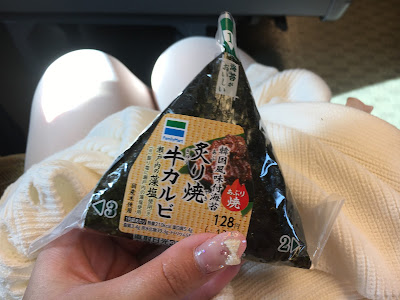





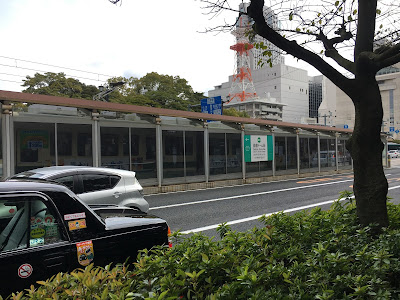
































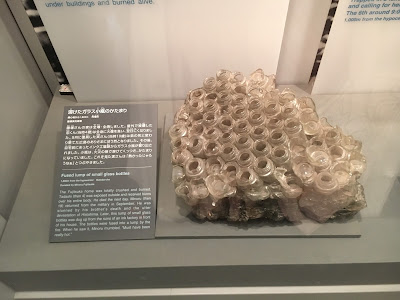














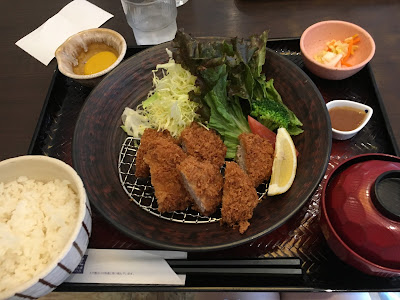

















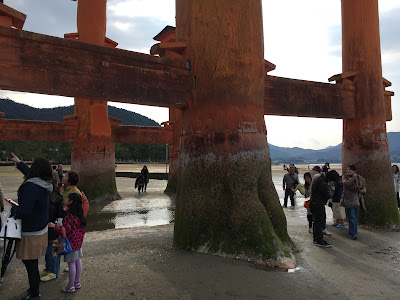




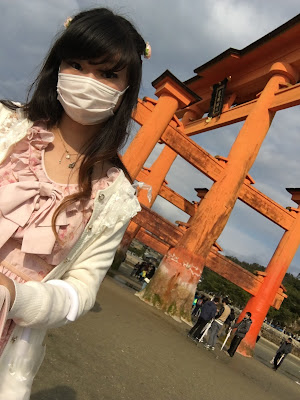































What a solemn and lovely post, thanks for sharing. The pictures and description of Hiroshima are both gorgeous and tragic, especially the Hall of Remembrance and the depiction of Black Rain. It's a nice change of pace/mood.
ReplyDeleteThere's so much more to it than I could capture in pictures! An experience that's certainly worthwhile imo.
DeleteWOW! You got a lot done in this day. It's interesting that you can see something more 'recent' (I use the term loosely okay?) but also so old like the Tori gate and the castle. The museum looks so interesting - glad you finally got to visit it.
ReplyDeleteYeah I felt like a lot of the aspects of the Hiroshima day trip were historical in a sense. It was all really interesting!
DeleteI always love reading about your Japan trips! This one is something I would love to do if I ever get to go to Japan. Seeing history that you've only ever learned in school or books. But learning valuable information so hopefully we will never repeat it :)
ReplyDeleteI would definitely recommend a visit! Thank you for reading <3
DeleteI read your blog. It is very useful for me.
ReplyDeleteVisit Our: Japan Golden Route with Hiroshima
Nice Blog
ReplyDeleteVisit Our The Ultimate Family Tour Package from Bangalore